Boa Constrictor Snakes
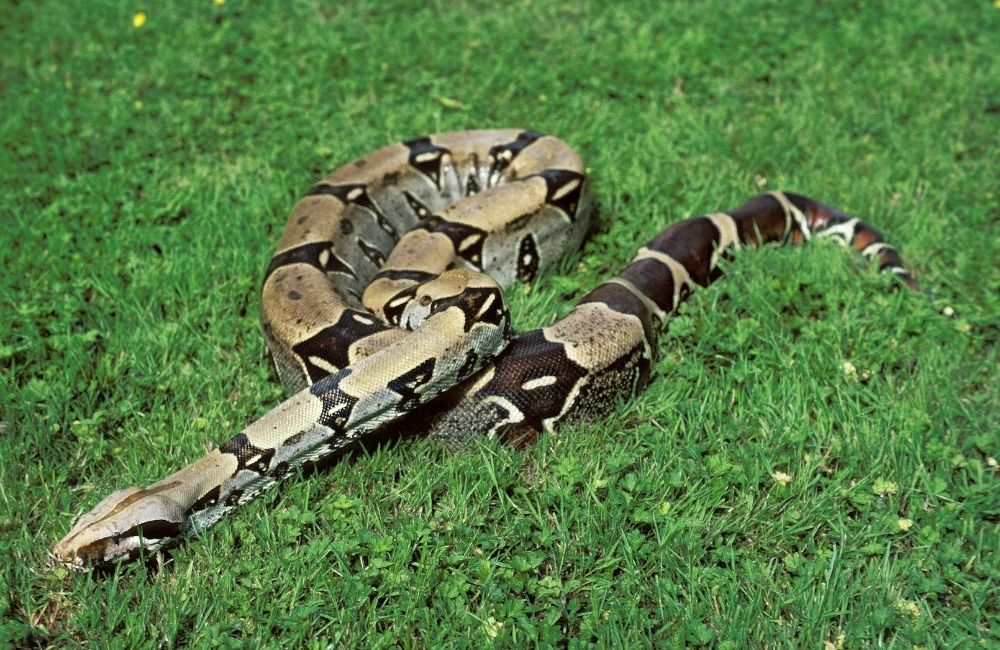
Have you ever wanted to learn more about boa constrictor snakes but couldn’t find enough information in one place? Don’t worry! We’re here to help you.
Boa constrictors are some of the most beautiful snakes that you could ever hope to see, but they’re also quite dangerous.
The name ‘boa’ is commonly used to describe a group of constricting and nonvenomous snakes. When we look at the boa family, there are over 40 species of boas!
In this article, we’re going to tell you all about what boa constrictor snakes look like, how big they are, and where they live. We’re also going to take a look at their behavior, what they eat, and how boas are different from anacondas.
What do Boa Constrictors Look Like?
Boa constrictors are some of the most recognizable snakes on the planet, and they are also some of the biggest snakes on the earth.
What sets them apart from other snakes?
Color and Pattern
If you’ve never seen a boa constrictor in a zoo, here’s what they look like.
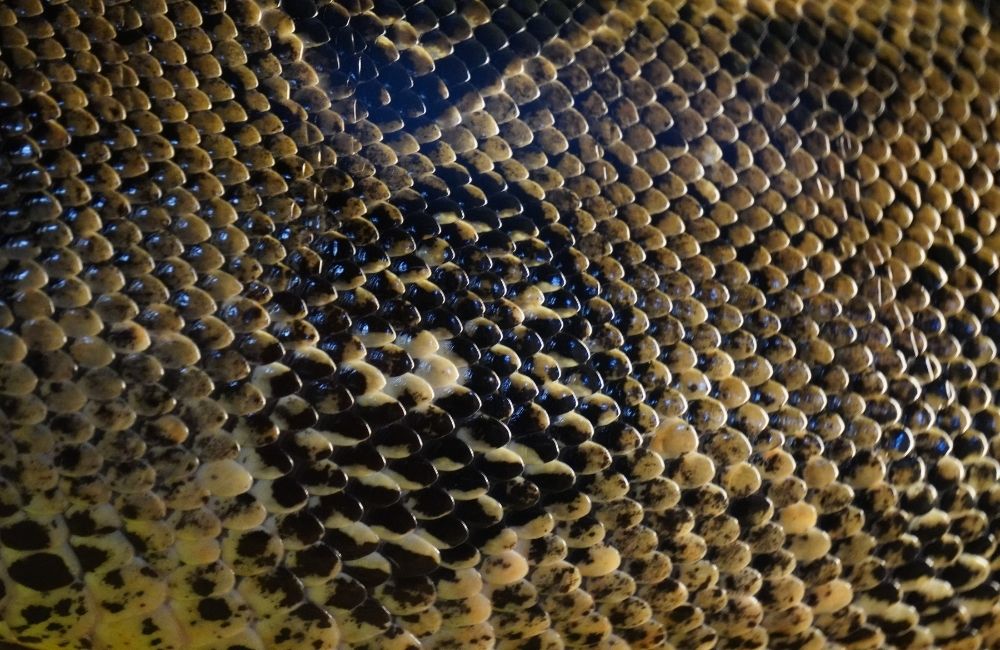
Boa constrictors have thick, strong, and muscular bodies that can easily crush their prey. They also have a distinctive color pattern on their skin with various shapes. It’s important to remember that these shapes are usually diamonds, circles, or ovals.
The pattern on the boas skin depends on their environment because they need to be camouflaged to ambush and kill their prey quickly. In order for a boa to successfully capture its prey, the boa must rely on the element of surprise. Therefore, stealth and surprise are very important!
When trying to identify a boa constrictor in the wild, remember that their bodies are usually colored grey or cream. The patterns that we talked about earlier will cover the entire length of their bodies.
The patterns covering the boa constrictors’ bodies are generally yellow, red, or green. They are always outlined in black as well. These patterns or marks are also called saddle-like markings, and they become much more noticeable and visible near the snake’s tail.
Length of a Boa Constrictor
The average boa constrictor is around 13 feet long.
The Boa’s Head
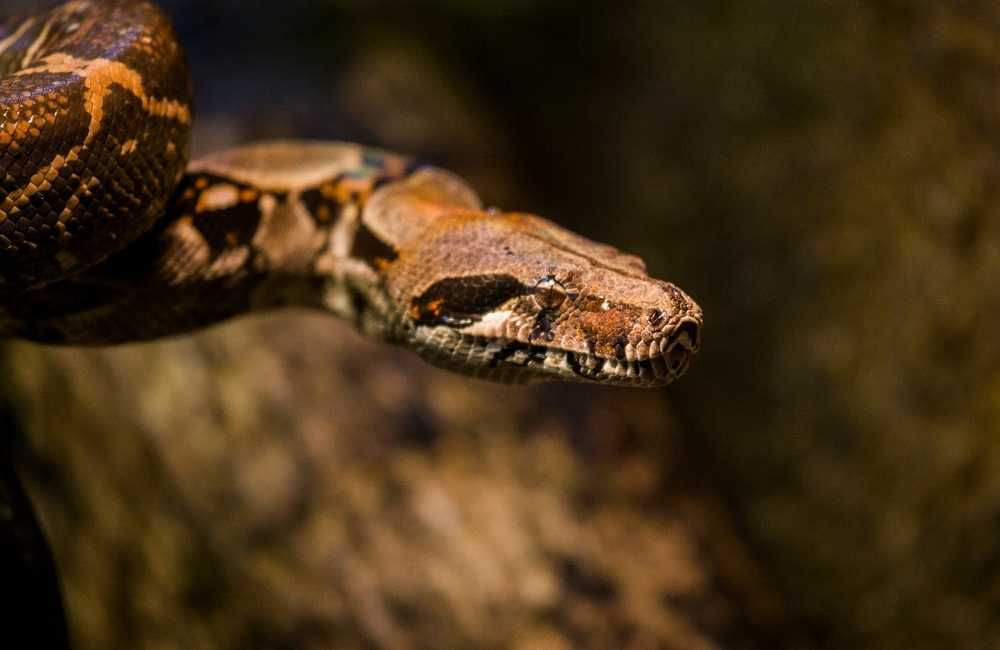
The boa constrictors usually have two pits on either side of their head. A pit is a type of hole on the side of the boas face. It has a membrane that helps the boa detect heat in its nearby environment. These pits are very powerful because they allow the boas to detect heat from creatures that can be as far as one meter away from where the boa is located.
In terms of how the boas heads look on the inside, remember that boa constrictors don’t have fangs, nor do they have venom. Instead, they have many small teeth that they use to hold their prey in place. While their teeth make sure that their prey is firmly secured, the boas then use their muscular bodies to wrap around their prey and strangle it.
Boa constrictors also have very flexible jaws. They can unhinge their jaws and swallow their prey in large pieces. Some animals that boas can swallow include pigs and even monkeys.
The average boa will have some markings on its head. However, these markings differ from one species to another. If you’re trying to tell a boa apart from another snake, try and look for a stripe that extends the length of the boa’s head. It usually runs from the back of the boa’s head all the way down to its snout.
Every boa also has a triangle-shaped marking that sits between its snout and eyes. This triangle marking can sometimes run from the snout all the way to the back of the boa’s eyes, where it runs down to the boa’s jaw.
Where do Boa Constrictors Live?
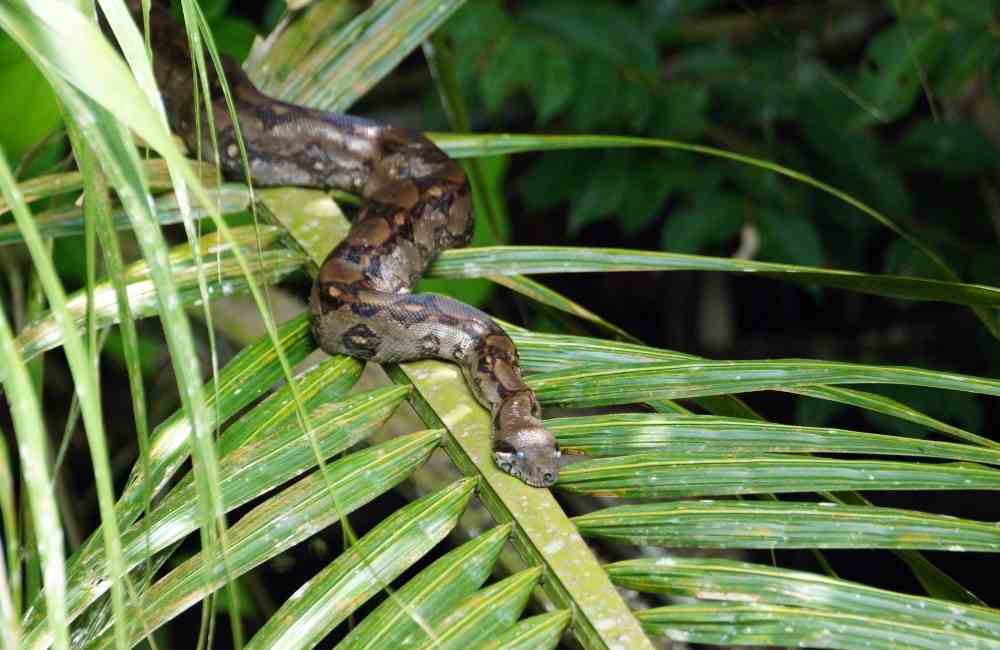
Boa constrictors live in the Western Hemisphere. This means that they are considered to be New World snakes, and as a result, you will find them in countries like Mexico, Argentina, and Peru.
More specifically, you can find boa constrictors in South American countries and Central America. If you find yourself traveling through the northern parts of Mexico, through Peru, or the Southern regions of Argentina, then you are likely to find these snakes. You can even find them in islands located in and around the Caribbean and near the Pacific coast.
In terms of where these snakes live on land, boas are found in places other than the jungle. Boas live in drier locations, such as tropical deserts and agricultural areas. They tend to live in the regions that have a nearby water source, such as a river or a brook.
How Big and Heavy do Boa Constrictors Get?
The average size of a boa constrictor means that they weigh approximately 50-60 pounds each, or 22-27 kilograms each. However, their weight doesn’t stop here! There are times when boas can grow and weigh more than 100 pounds, or 45 kilograms.
It’s important to remember that the size and weight of these snakes depend on their gender.
Female boas are longer and heavier than males. While the average weight of a male boa is 22-23 pounds, females can weigh anywhere from 22-35 pounds. Female boa constrictors are some of the most incredible snakes out there, and this is because, in addition to stalking prey to kill them later, female boas are sometimes pregnant with more than 50 babies at once!
The reason that boas are as heavy as they are is that they have large appetites. If a boa lives in an area with a good food source, it is much bigger.
How Long Do Boa Constrictors Live?
The average lifespan of a boa constrictor is around 20-30 years. However, if a boa is in captivity, its lifespan is a bit longer, meaning it can live to be about 40 years old.
Boa Constrictor Species and Family
Boas belong to the Boa genus, which has three species: the Boa constrictor, Boa imperator, and Boa sigma. The scientific name for this species is Boa Constrictor.
Different Types of Boas
The different types of boas are:
- Anacondas
- The boa constrictor
- The garden tree boa
- The emerald tree boa
- The rainbow boa
- The sand boa
- The rosy boa
- The rubber boa
Rainbow Boa Constrictor
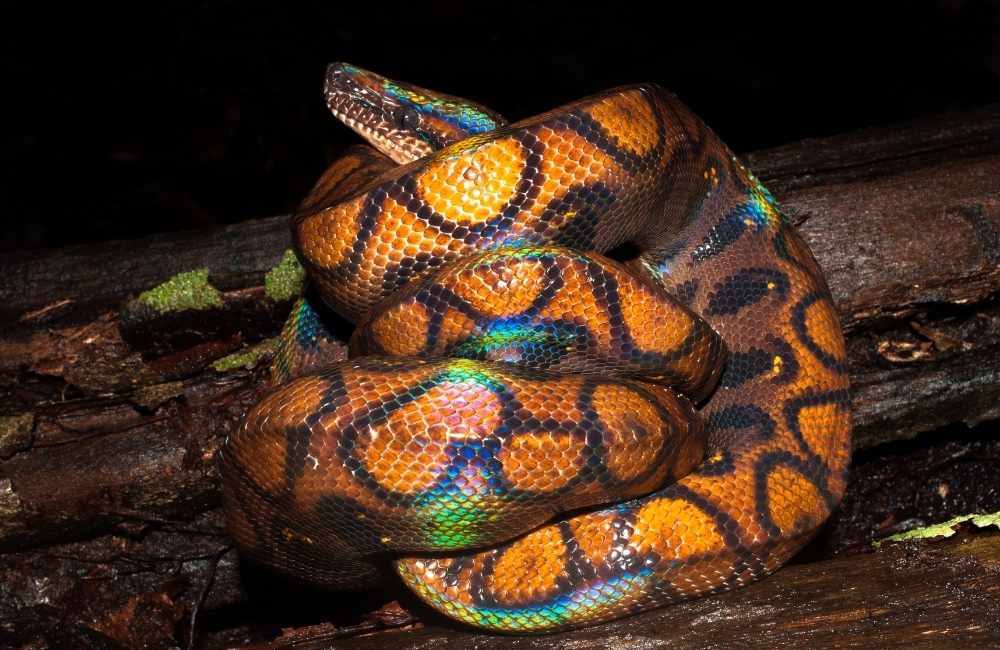
The rainbow boa constrictor is commonly found in south and central American countries. It is named as such because of its iridescent ridges on the surface of its skin. These snakes are four to six feet long, and they eat rodents, birds, and occasionally aquatic creatures.
What do Boa Constrictors Eat?
It’s important to know that boa constrictors are carnivores, so a considerable portion of their diets includes small animals like birds.
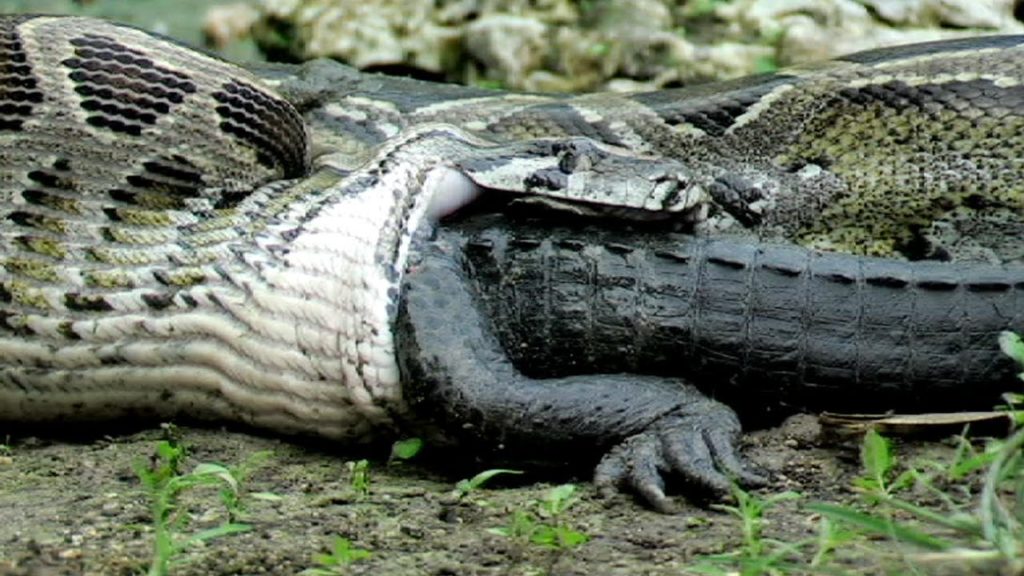
Still, you must remember that boas have strong and muscular bodies, which means they need an adequate amount of food to sustain them. Therefore, boas consume any animal that is small enough to fit inside their mouths, such as rats, squirrels, mongooses, bats, and even larger lizards.
In some cases, boas have been known to eat pigs!
The average boa constrictor can take anywhere from four to six days to digest an animal.
Boa Constrictor Hunting Habits
When boas go out to hunt, they tend to capture their prey by ambushing them.
As we mentioned before, boas are non-venomous snakes, which means that they can’t use venom to kill their prey. Instead, they use their bodies to constrict their prey. This means that they coil their bodies tightly around the bodies of whatever animal they captured and squeeze it tightly until it dies.
Boas are surprisingly fast movers, which means they can capture prey quite quickly, especially when they have been lying in wait.
Constriction
It is easy for boa constrictors to kill prey because of constriction.
Until very recently, researchers believed that boa constrictors killed their prey by cutting off the animals’ air supply, thus resulting in their prey dying of asphyxiation. However, new data and research have proven that the asphyxiation hypothesis is false.
Boa constrictors kill their prey by squeezing the bodies of small animals like rats, for example, by cutting off their blood supply. The flow of blood in the prey’s body stops rapidly, which is how the animals die.
Boa Constrictor Behaviour
Boa constrictors tend to keep to themselves unless they want to mate. They are also nocturnal or crepuscular animals. Nocturnal means that they are active at night, while crepuscular means that they come out during the twilight hours.
However, there are times when boas come out of their living spaces and into the sunlight to bask for a few hours.
Boas tend to remain alone during their shedding season as well. This is because they cannot see correctly due to a lubricant that is produced under the old skin layer that they shed. This liquid stops the boa from being able to see clearly for a few days, and therefore, it will remain alone until its vision comes back to normal.
Reproduction and Development in the Boa Constrictor
It’s a common misconception that all snakes lay eggs, but boa constrictors do not lay eggs like corn snakes or ball pythons.
They are viviparous, which means that an embryo develops inside the female boa constrictor’s body, and it gives birth to a live young boa.
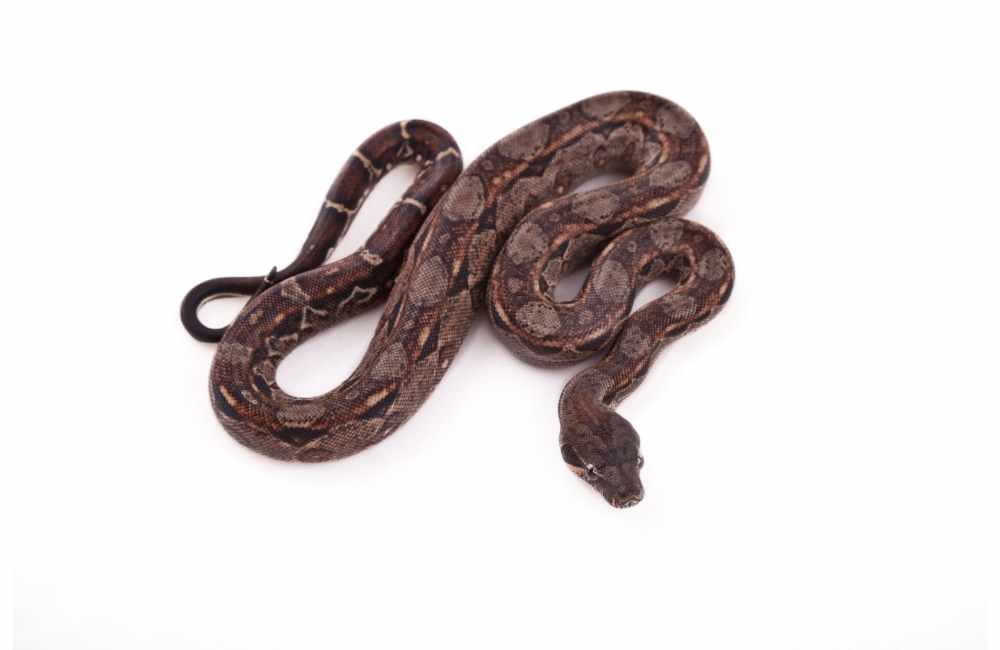
Boa constrictors tend to /breed when the weather is dry, usually between the months of April and August.
Most male boa constrictors mate with multiple females. Unfortunately, because male boas mate with several females simultaneously, their reproductive efforts are not always successful. This is because the females are not in the best physical condition to mate. If they conceive successfully, the newly born boas might be born with deformities or other physical defects.
When the breeding season begins, female boas let out pheromones from their cloaca to attract a mate. The male boas then wrestle with the females and breed with them. Depending on the snakes, breeding and copulation can last for varied periods, including for only a few minutes to multiple times over many weeks.
The conception of a new litter might not happen immediately, but it’s important to note that female boas can hold sperm inside their bodies for more than a year.
The period of gestation lasts for 100-120 days.
Boa Constrictors in Captivity?
If a boa is bred in captivity, the chances are that it will live much longer than if it were born in the wild. It’s important to remember that when boas are bred in captivity, they are not at risk for being preyed on, but they need sufficient space to move around and grow, primarily if they are bred in captivity from the time that they were born.
Boas are the types of animals that do well in captivity, so if you want to adopt one, the boa will get used to being around people quite quickly.
When keeping a boa in captivity, it’s important to remember that its enclosure must be strong and secure enough to keep the boa contained. These snakes are very strong, and they can easily escape if given a chance. You must have an enclosure around six to eight feet long and three to four feet wide. It must also be over three feet tall.
A hide box is also crucial for the boa to feel safe, but one must make sure that the hide box is not too big. If the hide box is much larger than the boa, it will feel unsafe.
Boa Constrictor Conservation Status
Boas are hunted and killed in some parts of the world for their skin. This means that they are an endangered species, but they are not extinct, nor are they likely to become extinct any time soon.
Boa vs Python vs Anaconda
If you’ve ever gotten confused about the boa, python, and anaconda, it’s understandable because these snakes are some of the most talked-about reptiles in the world.
Boas and anacondas belong to the same family, as anacondas are a type of Boa. This means that we need to distinguish between boas and pythons.
Here’s a list of differences between boas and pythons:
- Pythons have more bones in their bodies than boas do. The extra bone is in the python’s head.
- While boas are commonly found in Central and South America, pythons can be found in Asia, Africa, and Australia.
- Pythons are oviparous, which means that they lay eggs. Boas are viviparous, which means that they give birth to their young.
Amazing Facts about Boa Constrictor
- Boa constrictors use their stomach acid to digest food quickly.
- Female boas can give birth to 50-60 boas at once.
- Indigenous people in South America often use boas to kill rodents and other vermin in their homes.
- Boas don’t use their teeth to consume their prey.
- They still use what’s left of their limbs, even though they have since evolved from being four-legged creatures.
Conclusion
In this article, we took you through a detailed explanation of all things boa constrictor-related. We hope that when you do your next science project, the information we put together will come in handy!
